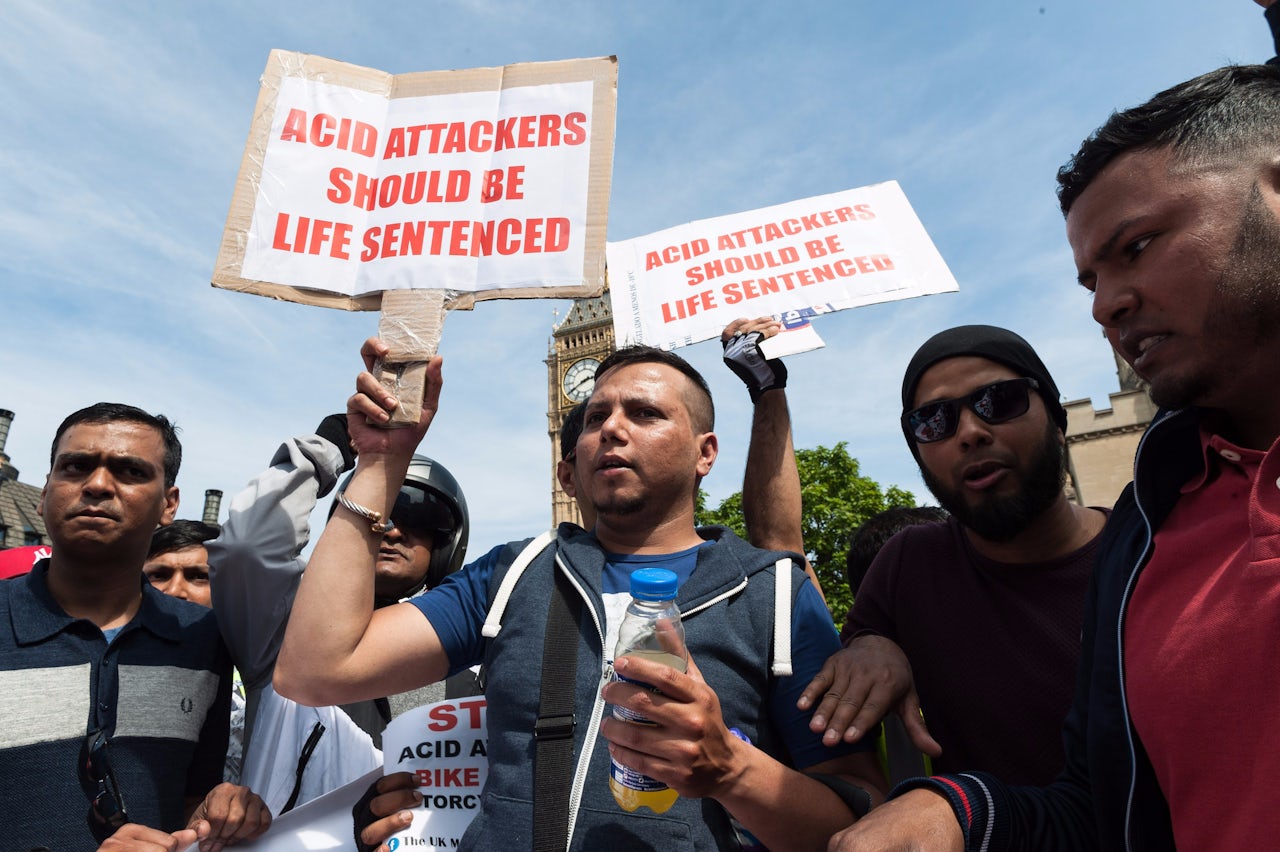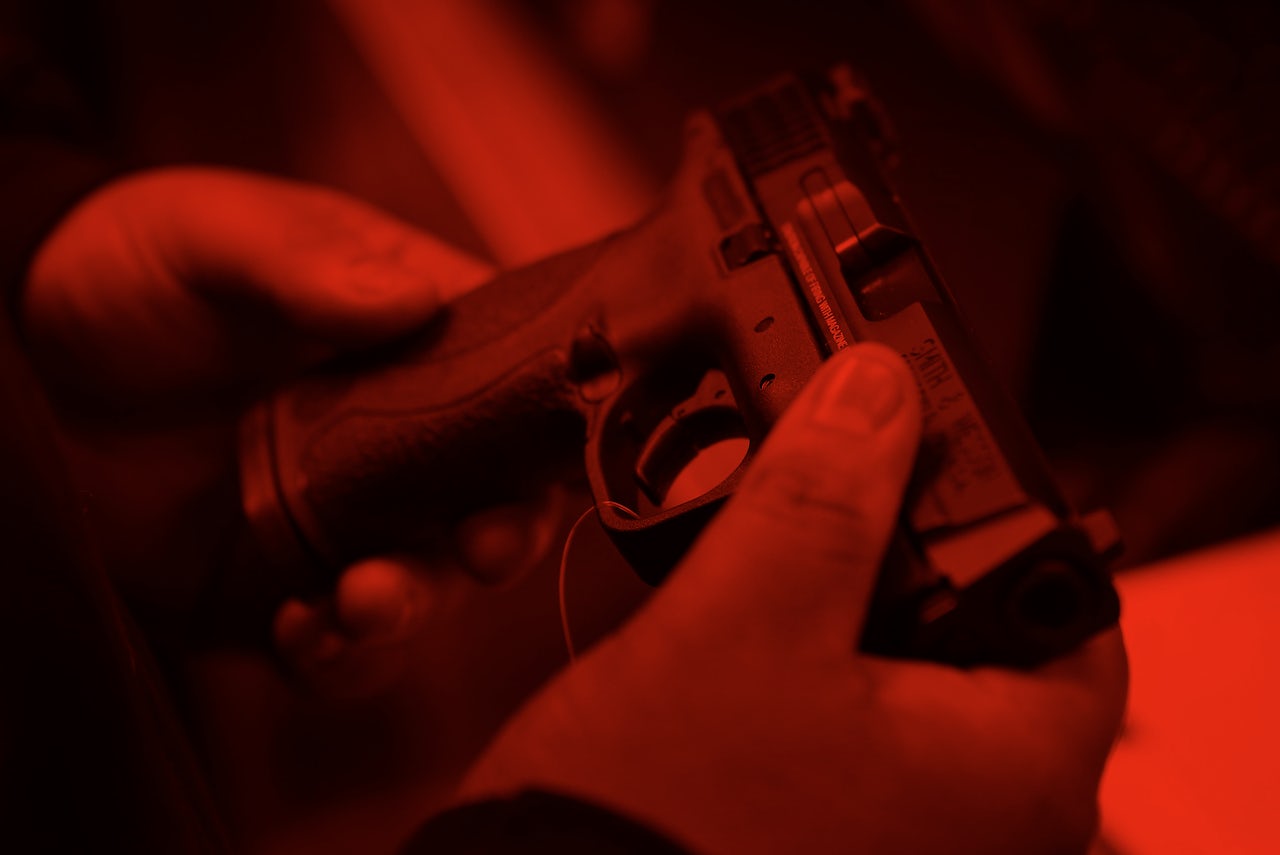Acid attacks in London are on the rise, and strict gun control may be part of the reason why.
There were 454 acid attacks in London in 2016, police told the BBC, up from 261 the year before, and this year looks set to continue that trend. So far in 2017, corrosive materials have been used in hate crimes, a nightclub assault, moped thefts, and even a random act of violence in which a paramedic’s ambulance was flagged down by her attackers. Last week, moped-riding teenagers sprayed acid at five people. Furthermore, while most acid attacks elsewhere in the world are usually associated with crimes against women, reports suggest men in London are twice as likely to be victims than women. What’s going on?
There hasn't been any research into why acid is suddenly a fashionable weapon in London, said Simon Harding, senior lecturer in criminology at Middlesex University London, but he pins it on the easy availability of corrosive materials such as sulfuric and nitric acid, which can be bought on Amazon for less than $20 as a product for cleaning drains, as well as ammonia and hydrochloric acid. Victims of acid attacks can be left with scarring and vision damage and may require dozens of surgeries over multiple years.
One explanation for the rise in acid attacks may be that other weapons are harder to obtain. Britain has tight gun controls, with handguns and semi-automatic guns are banned (they can be obtained with special permission, but self-defense is not a valid reason) and a license required for rifles and shotguns.
Flick blades are also entirely banned, while knives over three inches are restricted from being carried in public. Plus, London's Metropolitan Police have tried to crack down on knife carrying via its controversial stop-and-search program, and there's longer jail sentences for crimes committed with a knife. "If you're caught carrying one, if the police stop and search you, you could get three or four years in prison," Harding said. "But acid is something completely different. You can disguise it… carrying it around as a bottle of water. It's easy to use, easy to throw, easy to dispose of."
We talked about this story on our daily podcast, The Outline World Dispatch. Subscribe on Apple Podcasts or wherever you listen.
While gun controls have been in place for twenty years and the knife laws go back even longer, the restrictions may have forced criminals to look for alternative weapons. Indeed, acid isn't the only weird, horrific weapon gangs have turned to when unable to get guns or carry knives. “A few years ago, pitbull dogs started to be used," Harding said. "That lasted for three or four years and then it kind of fell out of fashion.”
As terrifying as the acid-throwing trend is, it’s not an argument against Britain’s gun control. While gun crime has increased over the past few years, with gun and knife crime up by 14 percent last year, such violent crime has been consistently falling in the UK over the past decade. And one in one million people are murdered with a gun in the UK, versus 31 per million in the US.
“We need to reduce the availability of this stuff.”
The eventual response to the attacks may well follow previous bans on guns and knives with restrictions on acid sales. The government is considering making it more difficult to buy corrosive materials, following a call for such a ban by the victim of a hate-fuelled acid attack.
Harding thinks that's a wise move. “We need to reduce the availability of this stuff,” he said, adding that police also need to be trained to look for acid the same as they do knives.
But James Alexander, senior lecturer in criminology and policing at London Metropolitan University, said the U.K.'s response to violent crime too often emphasizes removing potential weapons from circulation rather than addressing the root causes of such crimes.
“To address this issue more effectively, we need to consider why people, both young and old, feel free to commit acts of violence and focus on how we have failed to produce the relationships in local neighbourhoods, schools and other social structures that guide those who are susceptible to commit such crime away from offending," he said.
“The failure to address the underlying causes of violence, particularly among young people, will always result in new weapons of choice surfacing,” he said.

